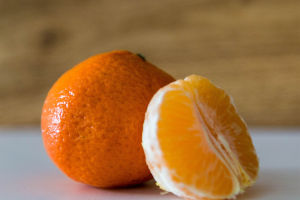Oranges are a beloved fruit for many, captivating with their sweet flavor and vibrant hues.
Yet, amidst the enjoyment of this citrus delight, a common question arises: what about the white strands within the orange?
These fibrous strands encircle the fruit's flesh, sparking debate among consumers—some see them as a minor inconvenience, while others consider them a vital part of the fruit's composition. So, are the white strands of oranges worth consuming? Let's delve into this discussion together.
Firstly, it's crucial to grasp the nature of these white filaments within oranges. Known as the pith, these white fibers are a form of connective tissue within the orange's pulp. Primarily responsible for transporting water and nutrients, the pith facilitates the fruit's growth and maturation.
Generally speaking, the pith of oranges poses no harm when consumed, as it comprises plant tissue and harbors certain fiber and nutritional elements.
However, for some individuals, white strands in oranges may prove bothersome. These fibers can slightly discomfort the palate, especially for those with heightened taste sensitivity.
Moreover, some argue that the white pith affects the overall taste, diminishing the orange-eating experience, and leading them to opt for peeling or avoiding it altogether.
Nevertheless, from a nutritional standpoint, the white pith of oranges holds significant value. While not as succulent as the flesh, it boasts rich reserves of fiber and vitamins.
Fiber plays a pivotal role in maintaining a healthy digestive system, aiding in peristalsis, and preventing issues like constipation.
Additionally, the pith is a wellspring of vitamin C, a potent antioxidant renowned for bolstering immunity and warding off ailments such as colds and flu. Thus, nutritionally speaking, consuming the white pith of oranges proves advantageous.
Deciding whether to consume the white pith of oranges depends on personal taste preferences and health considerations. If taste sensitivity or the impact on eating pleasure is a concern, individuals may choose to remove or avoid the pith.
However, for those prioritizing balanced nutrition and seeking to amplify their intake of fiber and vitamins, incorporating orange pith into their diet is a prudent choice.
Furthermore, certain demographics warrant special attention regarding the consumption of orange pith. Infants, young children, and the elderly may face challenges such as swallowing difficulties or digestive discomfort due to the pith's fibrous nature.
Thus, extra caution is advisable for these groups, with a recommendation to peel off the white pith to mitigate potential hazards.
In summary, the decision regarding the consumption of orange pith isn't absolute but hinges on individual taste preferences and health requirements.
For those mindful of nutritional balance, incorporating orange pith into their diet offers a wealth of fiber and vitamins. However, for individuals sensitive to taste, opting to peel or avoid orange pith can enhance their eating enjoyment.
Ultimately, making informed choices based on personal preferences and health status ensures a delightful culinary experience while maintaining overall well-being.

